Fl. (picc.) Cl. *Alto Sax (sop sax.) Bsn. Tbn. Pno. 3 (or 2***) perc. Strings (33331 or 66654 players****)
[NOTE: The Auditions pairs perfectly with Appalachian Spring by Aaron Copland, for which the scoring of his original ballet is: Fl. Cl. Bsn. Pno. Strings (22221)]
First performance by Martha Graham Dance Company, Janet Eilber, Artistic Director; Troy Schumacher, Choreographer; the ICE Ensemble; Vimbayi Kaziboni, Conductor; commissioned and presented by PEAK Performances, Jedediah Wheeler, Executive Director, at Montclair State University in New Jersey on 14 November 2019, with Costume Design by Karen Young and Lighting Design by Yi-Chung Chen.
Duration: 27 minutes
First concert (no dancers) performance by the Aspen Contemporary Ensemble at the Aspen Music Festival, Timothy Weiss, Conductor on 1 August 2023 in Harris Concert Hall.
* In the case where Saxophone is not available, then the Alto saxophone (doubling soprano saxophone) part can be played on Bb clarinet. There is only one score and set of parts which incorporates all versions. For example, in individual parts, whenever there is a saxophone cue it is marked "Sax. (or Cl. 2)” Sax/cl 2 parts are labeled 3a & 3b.
***There are three percussion parts. The Percussion III part plays all of the marimba music (which music is also listed in the other two percussion parts.) In case a third player is not available to play the marimba, the composition has been performed with only two players, though it is very strongly recommended to have three percussionists, not two.
,
****In the case where a string section is used instead of 5 solo string players, some of the double-stops are played Divisi. These are all notated in the score and parts. If 5 solo strings are being used, it is optional to use subtle, elegant amplification on them, the bass in particular.
Dedicated with admiration and gratitude to Troy Schumacher, Jedediah Wheeler, PEAK Performances, Janet Eilber, Martha Graham Dance Company, Vimbayi Kaziboni, and the ICE Ensemble.
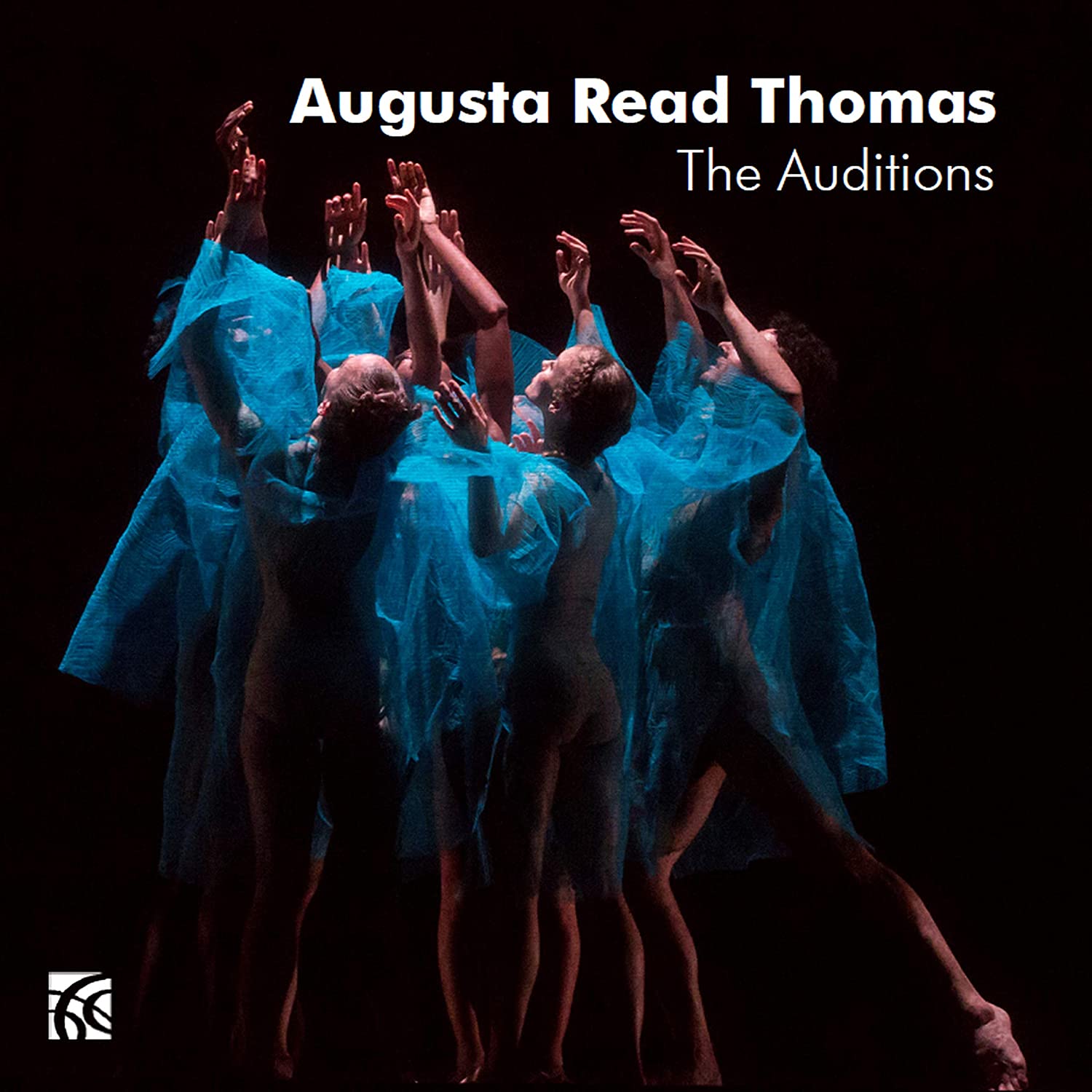
This work is available on
Augusta Read Thomas: The Auditions
The World Premiere of The Auditions Ballet: Martha Graham Dance Company, Troy Schumacher, Choreographer, Ice Ensemble Chamber Orchestra, Vimbayi Kaziboni, Conducting
The Auditions | Artists' Virtual Talk.
Jedediah Wheeler, Executive Director of Arts + Cultural Programming at Montclair State College speaks with the creative artists of THE AUDITIONS.
"The search for that mystical next place is an endless cycle. “The Auditions” shows one “round” of striving and ascent but the ballet reminds us that cycles of yearning and of moving onward are eternally spiraling." — Augusta Read Thomas
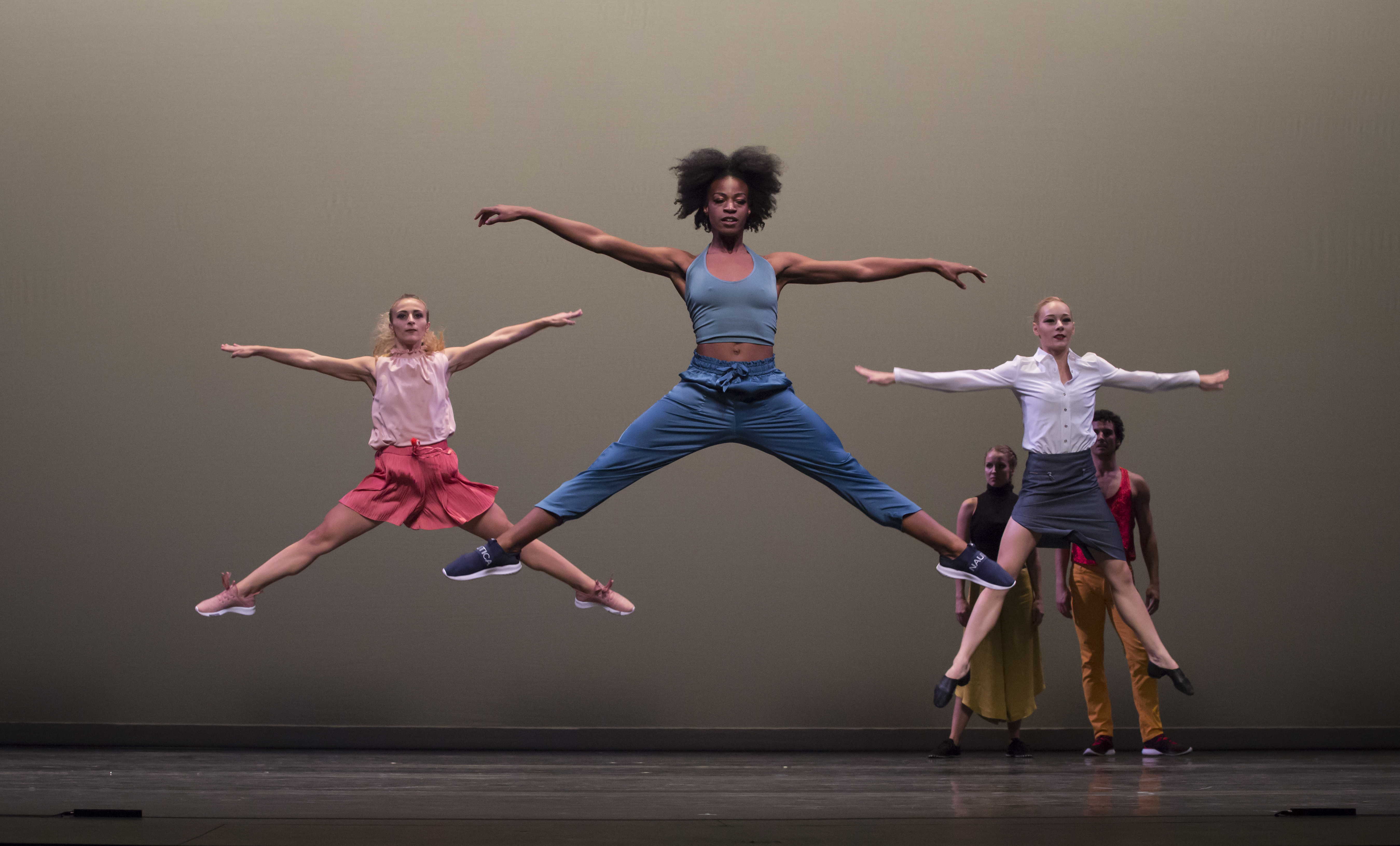 Photo by Marina_Levitskaya
Photo by Marina_Levitskaya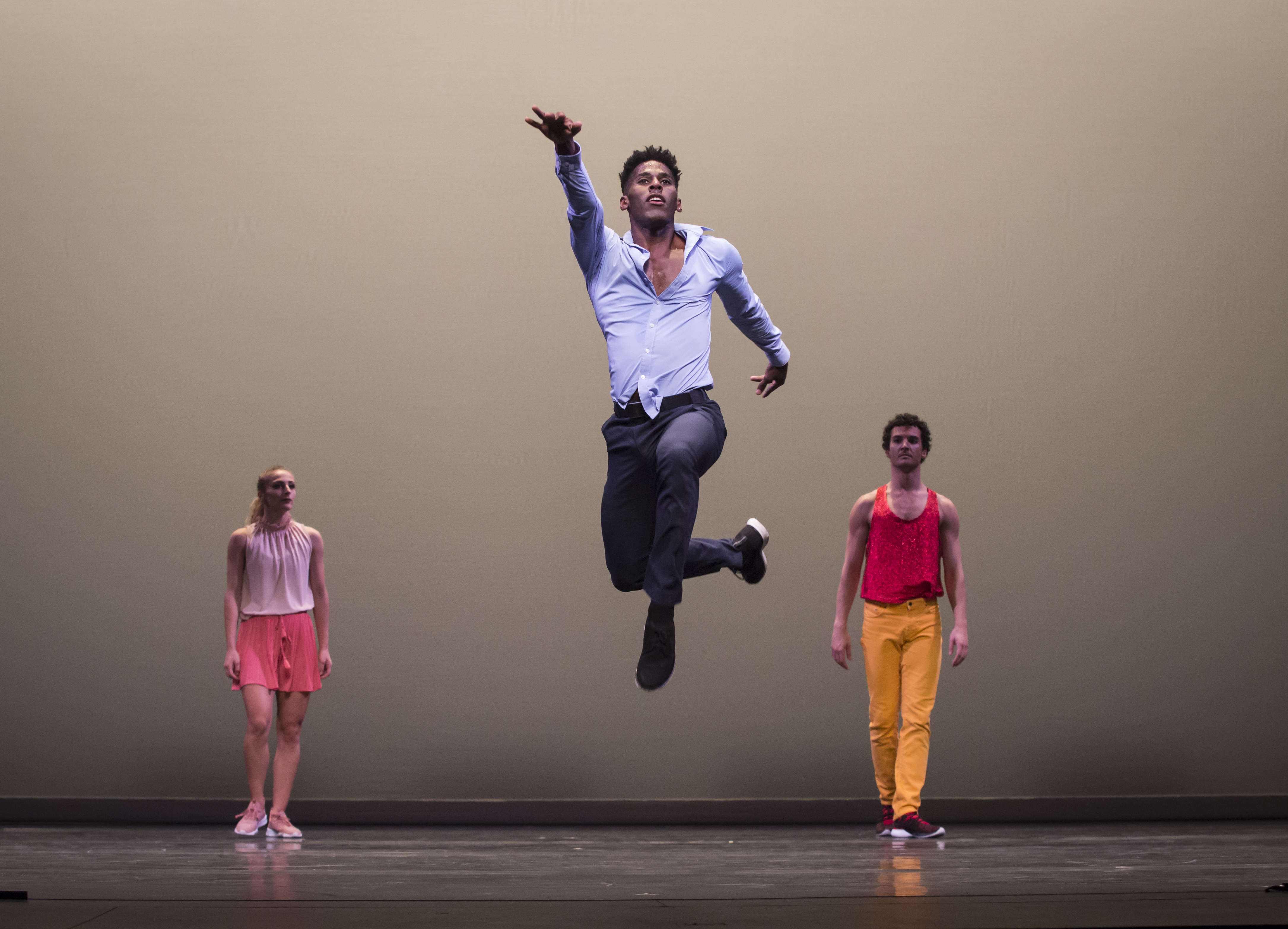 Photo by Marina_Levitskaya
Photo by Marina_Levitskaya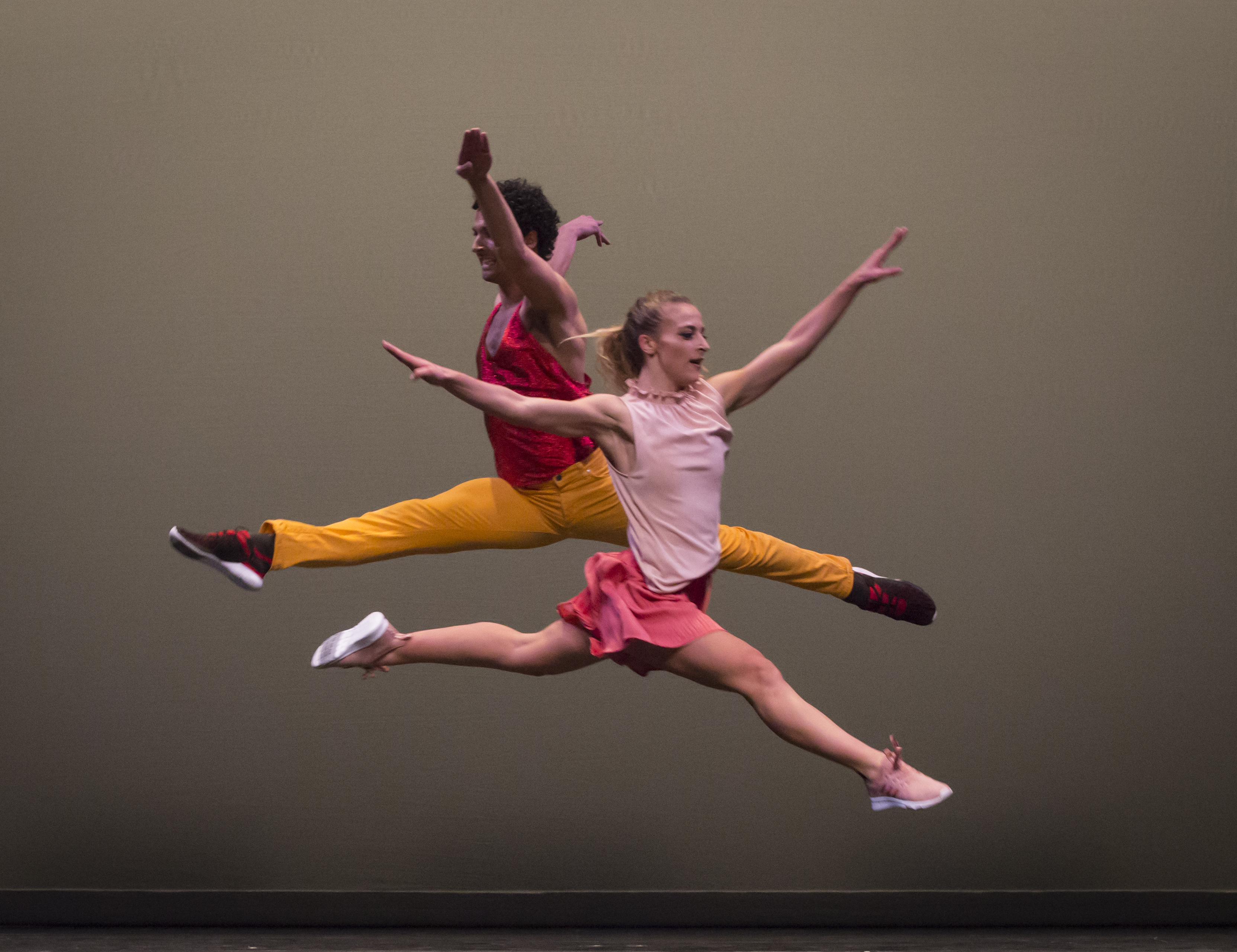 Photo by Marina_Levitskaya
Photo by Marina_Levitskaya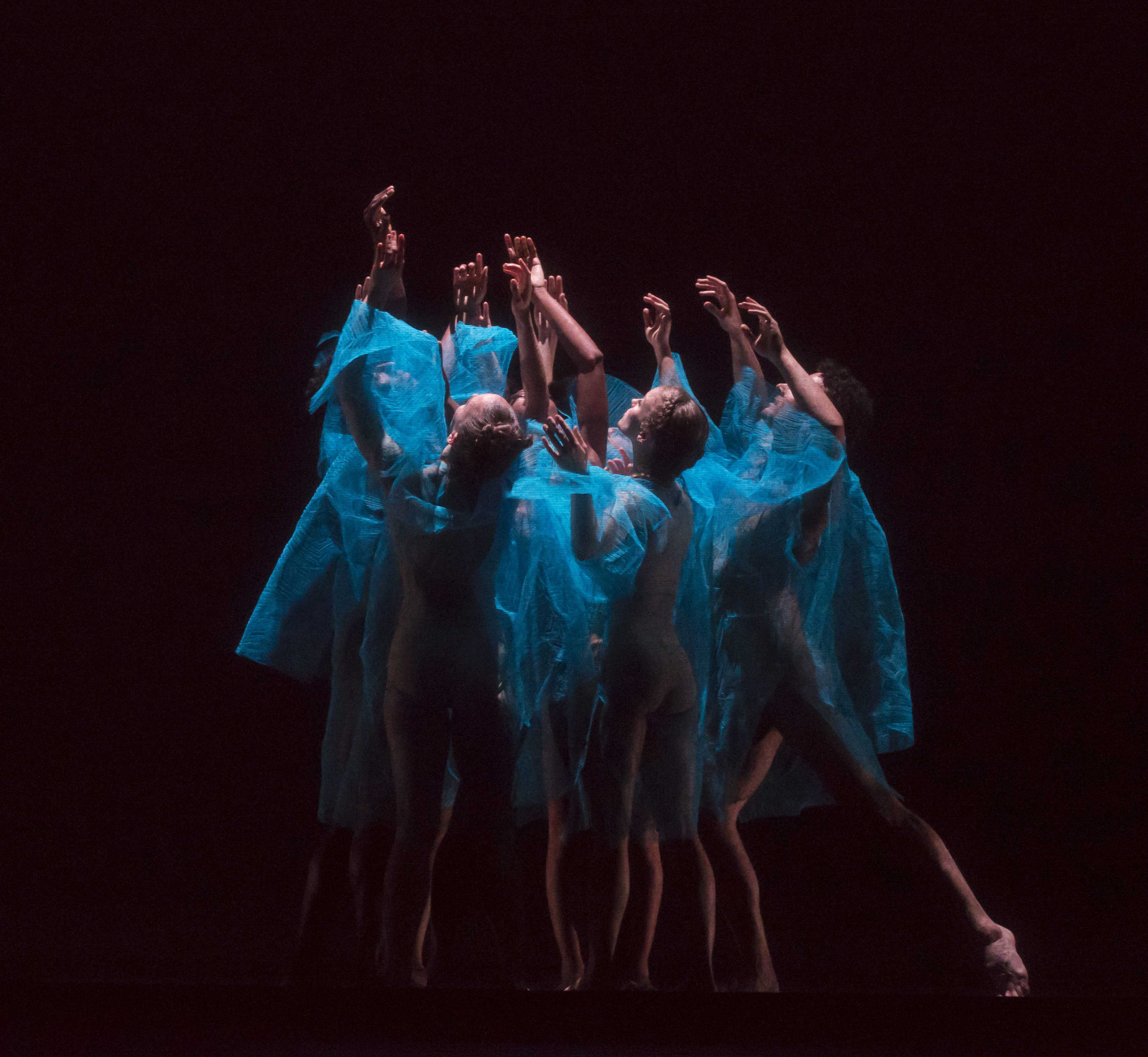 Photo by Marina_Levitskaya
Photo by Marina_LevitskayaIf you want to list movements in your program book:
Resonant-
Energetic-
Elegant-
Ardent-
Ethereal-
Passionate-
Mystical-
The Auditions takes place in two worlds - one ethereal, one grounded. It follows its musical framework closely, which, in a cyclical nature, pulses between two very distinct, imaginative sonic and dramatic worlds: “ethereal landscape” or “landscape paradise” and “the audition room.” Designed in seven arcs: slow, fast, slow, fast, slow, fast, slow, the work has a duration of 26 minutes, and is performed without a pause.
We set out to make an agile and energized artwork whose flexibility would allow for a continually evolving braid of harmonic, rhythmic, lyrical, athletic, and contrapuntal elements, both in terms of music and movement. We collaborated closely for 18 months on the creation of this artwork.
At every level, we are concerned with transformations and connections. The Auditions unfolds a labyrinth of musical and movement interrelationships and connections that showcase the dancers and musicians in a virtuosic display of rhythmic agility, counterpoint, skill, energy, dynamic range, clarity and majesty. At times gentle, delicate and spacious and at times vivid, virtuosic, and blazing, the ballet culminates in music and dance of enthusiastic, intrepid (almost Stravinsky-like) spirits while never losing their sense of playfulness and effervescence.
The 126-page musical score is highly notated and carefully structured; the musicians work from a nuanced, specific text. Augusta said, “I like my music to feel organic, self-propelled — as if we listeners are overhearing (capturing) an un-notated, spontaneously embodied improvisation. Music and dance must be alive; they have to jump off the page and out of the instrument and body as if something big is at stake.” We worked hard to ensure that the music dances and that the dance is musical.
We devoted our strongest, most focused efforts to creating The Auditions and we feel profoundly fortunate for the investments made by Jedediah Wheeler, PEAK Performances, Janet Eilber, Martha Graham Dance Company, Vimbayi Kaziboni, and the ICE Ensemble, each of the dancers and musicians, and the whole creative and production team.
1. The Landscape
We hear elegant, evocative and expansive music begin in darkness. A beautiful, colorful, and mysterious world slowly appears. Someone inhabits this mystical, spiritual realm. This image fades out as resonance of high bells rings alluringly to silence in the air.
2. The Room
Six people in a bright, white lit room. Perhaps it's a waiting room of sorts, or a holding center, or a theater stage. Everyone in this room is there because they are auditioning to get into that other level/world/place/realm/galaxy. They do not know each other. The only way to be chosen to transfer to the mystical level is to dance for an invisible judge, who then chooses who can make the ascending journey to the “ethereal landscape.” The dancing they must do is exuberant and competitive. The music is virtuosic, rhythmic, highly characterized, and colorful. At times playful, jazzy and rhythmically animated the music is precise, clean, intentional, alive-from-the-inside and kaleidoscopic. Before the dancers realize the first audition is over, one dancer is chosen, bathed in light.
3. The Landscape
That dancer leaves the room and transfers to the ethereal landscape to find only one person there. The two communicate physically. A dance that was hinted at in arc #1 begins to grow between them.
4. The Room
In the second audition, the remaining dancers break into two groups, a trio and a duo. At the end of this second audition, the trio is bathed in light and transfers upward. They discover the two souls already there in that, by now familiar, mystical aura.
5. The Landscape
A growing community is revealed.
6. The Room
During this third and final audition, with only two competing dancers left, they must face off as exhaustion seeps in. In the middle of the last audition, one dancer is chosen and transfers upward. Left alone, the remaining dancer doesn't stop until collapsing. At that moment, in a slightly unexpected plot twist, she/he is chosen and transfers.
7. The Landscape
We see all of the dancers together in the landscape as one. What has been growing choreographically and musically in this landscape feels complete now that everyone has made it. They continue onward as a group. While it took them as individuals to make it here, it's the community that matters now. While they believe that they have arrived at this place as their final destination, at the end of the ballet, in a full twist, the group is bathed in that signature ‘you-win-the-audition-lighting’ and are all chosen to proceed somewhere else - upward, spiraling outward. This landscape paradise realm is then understood to be an audition layer too, and these layers go eternally onward.
The search for that mystical next place is an endless cycle. The Auditions presents one round of striving and ascent, but the ballet reminds us that cycles of yearning and of moving onward are eternally spiraling.
The ballet score The Auditions was written for the Martha Graham Dance Company, and with it, Thomas joins a distinguished company of composers who wrote scores for this seminal figure in modern dance (Copland, Menotti, Barber, Schuman and Hindemith amongst many others). It is structured in 7 sections, with the auditions of the title being the even-numbered, action-packed sections (all titled 'The Room'), and the odd-numbered ones (all titled 'The Landscape') acting as slower, more otherworldly frames. The first such 'Landscape' begins populated by only one dancer, as the listener enters this rarefied sonic realm. Following each audition, where Thomas' restless hocketing rhythms and kaleidoscopic instrumental colours put the dancers through their paces, each succeeding 'Landscape' becomes more populated and less static as the instrumental colours coalesce more purposefully, thus fuelling the ensuing auditions' trajectories. The final 'Landscape' seems to draw everything together as a slow, serene procession of glowing chords transports the listener away from The Auditions' arena and out into the open air. One has the sense that the music is still continuing somewhere else, and others are listening to what's happening there. Just not us..........
Copyright © Paul Pellay
Podcast: The Talking Cure
Conversations with Jed Wheeler
EP4: The Auditions | Augusta Read Thomas
ICE ENSEMBLE ARTISTS
Isabel Lepanto Gleicher, flute
Joshua Rubin, clarinet
Ryan Muncy, saxophone
Rebekah Heller, bassoon
Michael Lormand, trombone
Jacob Greenberg, piano
Nathan Davis, Ross Karre, percussion
Jennifer Curtis, Josh Modney, Gabriela Diaz, Pauline Harris, violins
Kyle Armbrust. Wendy Richman, violas
Meaghan Burke, Chris Gross, cellos
Randy Zigler, double bass
Vimbayi Kaziboni, conductor
Levy Lorenzo, sound engineer
MARTHA GRAHAM DANCE COMPANY
Lloyd Knight
Charlotte Landreau
Marzia Memoli
Anne O’Donnell
Lorenzo Pagano
Anne Souder
Leslie Andrea Williams
Click image to enlarge
Harvey Steiman, The Aspen News, August 5, 2023 “Augusta Read Thomas’ piece, “The Auditions,” was written as a dance piece that debuted in early 2020. The contrast between slow, dreamy segments and faster, wilder sections of the 27-minute piece made for compelling listening.”
Richard Whitehouse, Gramophone “Timbral scintillation, long a facet of Thomas’s armoury, comes to the fore in The Auditions, a ballet in which the rhythmic vitality of its even-numbered movements is thrown into relief by the shimmering aura of the other four, as if placing human activity at an ethereal remove.”
Dominy Clements, MusicWeb International
“Very well recorded and superbly performed, this is a very fine programme indeed of one of today’s leading composers. Augusta Read Thomas’ work rewards easily as much as it challenges, and is very much deserving of the attention it receives.”
“To my ears [The Auditions] has a ritualistic feel which gives its progression a quality of inevitability, by which I don’t mean predictability. Thomas’ precision in instrumentation and skilfully subtle use of a variety of percussion delivers a plethora of colour and transparency, and the whole thing is strikingly stimulating. It has a Stravinsky-like edge, but rarely sounds like Stravinsky.”
Brian Seibert, The New Yorker “The [International Contemporary Ensemble] musicians also draw out the details in Augusta Read Thomas’s brilliant composition for “The Auditions,” a genuinely intriguing world première by the choreographer Troy Schumacher, in which dancers ascend from sneaker-ballet idiosyncrasy into an aurora borealis of tulle.”
Lana Norris, National Sawdust Log
“The Auditions (2019), choreographed by Troy Schumacher and scored by Augusta Read Thomas, is to see movement, and even to feel a glimmer of pride that humans just keep fighting the damn fight.”
“This was top-notch programming for a Sunday afternoon: perfect program length, no program notes, prairie dresses(Appalachian Spring/Copland) vs. crop top now, and content supple enough to lightly entertain its audience and sustain deeper discussion. Spring moved at butter-churn speed, devoting time to individual interactions but with limited communal enlightenment.”
“The Auditions, however, was fast-paced communal enlightenment. It mimicked a young urban street, with Internet-era attention spans contrasted to the regal, focused attention in Spring. Dancers were engrossed in private trajectories, yet fully aware of one another. One by one, they each were trapped by a spotlight, and a descending string light offered the opportunity to be transported to another world.”
“Nearly all were transported, and the remaining two danced themselves to death in their desperation to find enlightenment. Effective lighting by Yi-Chung Chen, costumes by Karen Young, and nice articulation by the omnipresent musicians of the International Contemporary Ensemble made the story so effective that an engrossed toddler processed every point out loud—something I thought was wonderful, and proof of solid construction.”
“Thomas created distinct, complicated musical habitats for Schumacher’s physical and emotional movement. She welded music that matched the straightforward drama: friendly pitched percussion and groove animated the sprightly search for meaning, and droning strings floated the calm enlightenment. Within these effective contrasts, however was a vital flexibility and wisdom. Neither musical place was quite what it seemed; high demands on chipper pitched percussion, and a peaceful rhythm unsettled by timbre, dislodged each habitat out of an easy category. Neither [dramatic] place was an ultimate failure or arrival, and Thomas gave a friendly reminder that change is unstoppable and growth is a choice.”
“Is America grown? Is it maturing how we might wish after 75 years? No. But these two pieces, next to each other, suggested a move from individual settlers toward collective diversity, submerged experience toward shared desires, and an expanding emotional vocabulary. And Montclair University’s Peak Performances series created a pocket of hope that instead of just burning, the future could burn brightly.”
Elaine Molinaro, Montclair Local
“Thomas’ score for “The Auditions” focuses on musical and movement interrelationships, with a kaleidoscope of percussion. Sequences of quick taps on a vibraphone, marimba and temple block are in tune with the quick steps of the dancers’ feet.”
“The Auditions” takes place in two locales, the known and the unknown, demarcated by the rise and fall of the curtain. Dancers are transported from one world to the other by clasping a neon rod lowered from the sky. In the known world, dancers wear everyday modern dress: jeans, sweatpants, a business skirt, button-down collared shirts, tank and tube tops and sneakers. Staccato, searching movement and music punctuates the known world. The unknown transitions into legato sounds and suspended movements. In the known world, as in Graham’s piece, the performers are gendered. In the unknown world, the dancers become one as they move in unison, all wearing nude bodysuits surrounded by a halo of costume designer Karen Young’s gorgeous, diaphanous turquoise material, glowing in contrast to lighting designer Yi-Chung Chen’s softly aquamarine-lit cyclorama backdrop.”
“…there is an ethereal or aquatic, perhaps spiritual, realm. When people transform into figures evoking sea anemones, winged monarchs or floating spirits, the nonhuman world loses some of its human immediacy. It all suggests a nonspecific, general image for the future. However, to witness a modern choreographer in conversation with a predecessor’s pivotal work was exciting. Back in the known world, a man and a woman remain, again recalling the Bride and Groom of the former piece, and they too eventually join the other egalitarian world. In this way, Schumacher effectively communicates with the Graham legacy in a respectful yet forward-looking manner.”
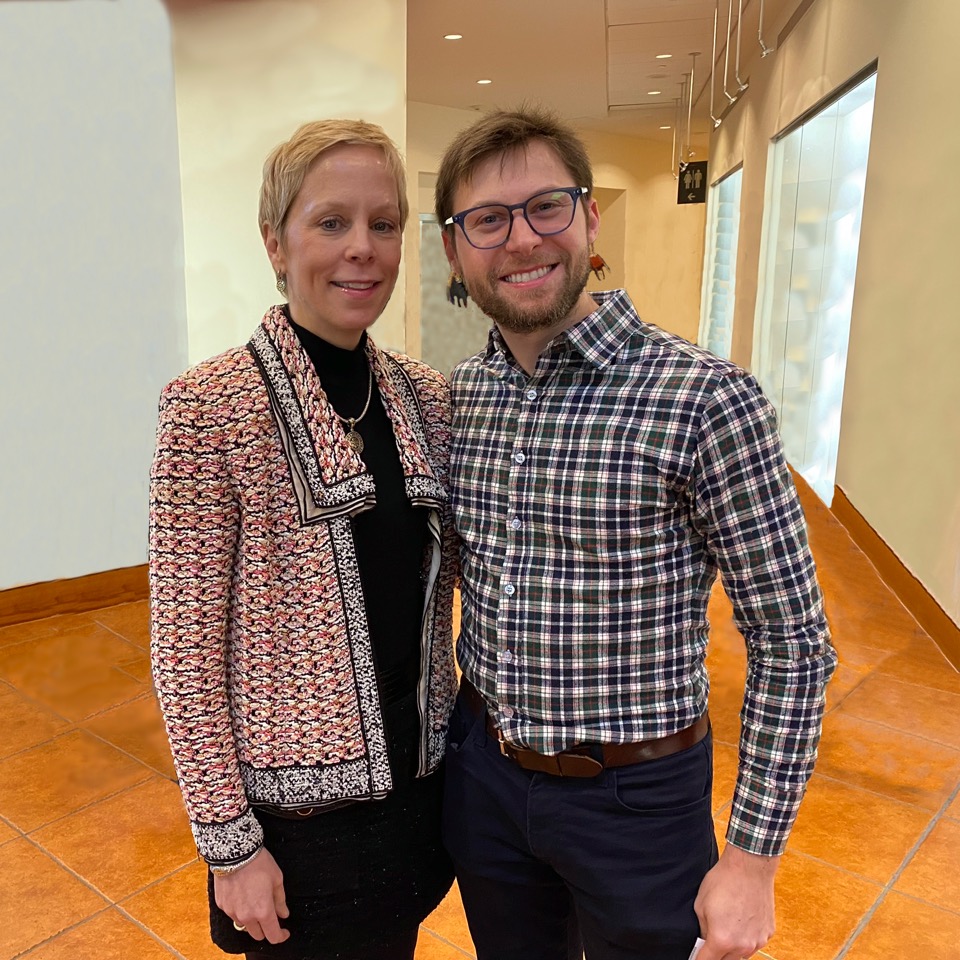
.jpg)
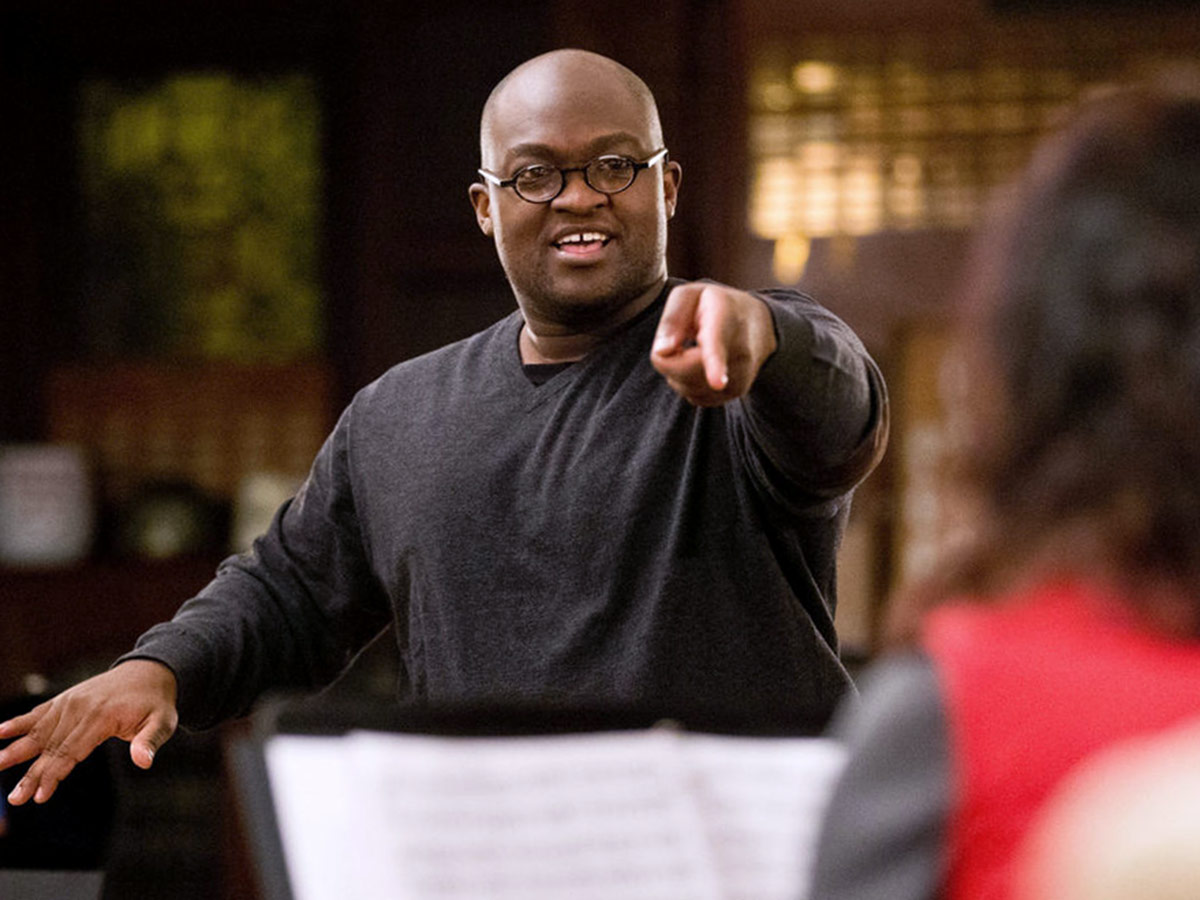
To obtain examination or performance material for this
Augusta Read Thomas work, please contact Nimbus Music Publishing.
